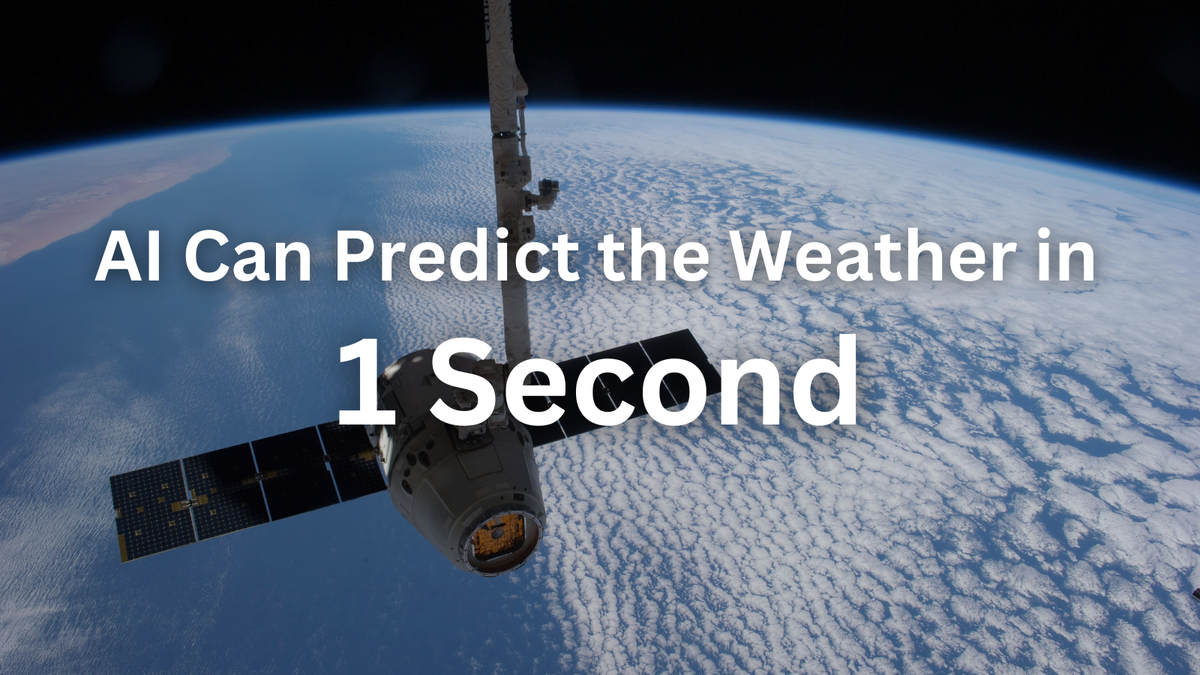AI Can Predict the Weather in 1 Second—The Future Is Here!

Weather forecasting has always relied on supercomputers crunching complex models for hours or even days. But now, a new AI system called Aardvark Weather can generate forecasts in just one second on a desktop computer.
This breakthrough could make weather forecasting faster, cheaper, and much more energy-efficient—transforming the way we predict storms, heatwaves, and rainfall. I’m excited to see where this leads, as it has the potential to make forecasting more sustainable and environmentally friendly in the long run!
How AI Is Revolutionizing Weather Forecasting
Traditional weather models rely on numerical weather prediction (NWP), which uses satellite data, weather balloons, and ground stations to generate forecasts. But these systems are slow and energy-hungry, requiring massive supercomputers to process data.
🔹 What Makes AI Different?
Unlike previous AI tools that only replaced small parts of the forecasting process, Aardvark Weather:
✅ Replaces both the forecasting and data initialization process, cutting computation time in half.
✅ Uses just 10% of the input data that traditional models require.
✅ Generates a full weather forecast in just one second—instead of hours or days.
💬 My Take:
This is a huge leap forward! If AI can replace expensive, power-hungry supercomputers, weather forecasting could become much more energy-efficient. This could be a major win for sustainability.

Can AI Predict Extreme Weather Accurately?
While AI is making forecasting faster, it still has limitations—especially when it comes to severe weather events.
🔹 The Big Challenge
📌 Aardvark’s model uses a lower-resolution grid (1.5-degree squares), while traditional models like ECMWF’s ERA5 use much finer grids (0.3-degree squares).
📌 This means AI might struggle to detect smaller, more complex weather patterns, like hurricanes or tornadoes.
📌 AI still relies on physics-based models for training—it can’t work on observational data alone (yet).
💬 My Take:
AI’s speed is incredible, but accuracy is just as important. I wouldn’t want an AI-only system predicting extreme weather until it can match or surpass traditional models.
The Future: AI + Traditional Models Working Together
Some scientists believe AI will eventually surpass traditional forecasting, using only historical and observational data. Others think AI will always need physics-based models to train on.
🔹 The Best Path Forward?
🔹 Continue improving physics-based models to make them more accurate.
🔹 Use AI to speed up forecasting, reducing the need for energy-intensive supercomputers.
🔹 Combine AI and traditional forecasting to get the best of both worlds.
Final Thoughts: A Greener Future for Weather Forecasting?
AI is making weather predictions faster than ever, and in the long run, it could save massive amounts of energy by reducing reliance on supercomputers.
🚀 What’s Next?
✅ AI should handle general forecasts, making weather predictions faster and more sustainable.
✅ Traditional models should still lead for extreme weather events, ensuring accuracy.
✅ The future could be a hybrid system, using AI to enhance and speed up traditional forecasting.
If AI continues to improve, weather forecasting could become far more environmentally friendly—which is something I’m really looking forward to!
What Do You Think?
💡 Would you trust an AI-generated weather forecast?
💡 Can AI eventually replace traditional forecasting?
💡 Should we rely on AI to predict extreme weather events?
Let’s discuss on X(Former Twitter)
References:
Sparkes, M. (2025, March 20). AI can forecast the weather in seconds without needing supercomputers. New Scientist. https://www.newscientist.com/article/2472659-ai-can-forecast-the-weather-in-seconds-without-needing-supercomputers/



